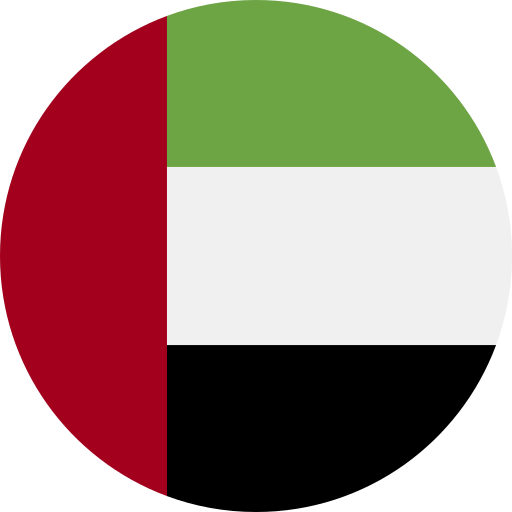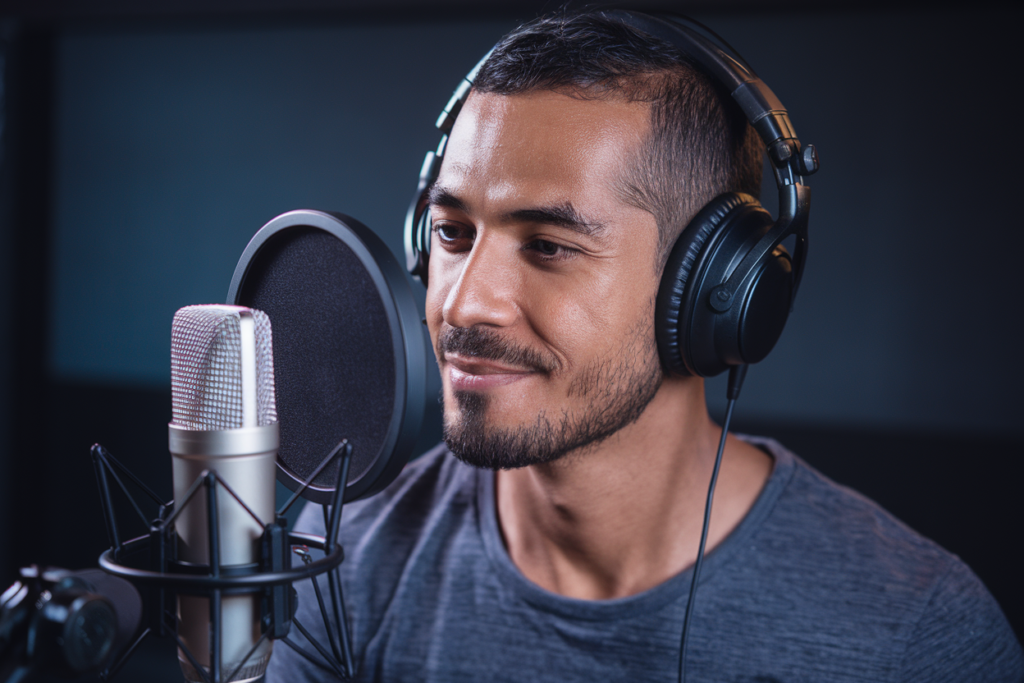Key Takeaways
- Diverse Dialects: Arabic features a rich variety of dialects, primarily categorized into Modern Standard Arabic (MSA) and Colloquial Arabic, each reflecting regional cultures.
- Most Spoken Dialects: The most widely spoken dialects include Egyptian, Levantine, Gulf, Maghrebi, and Sudanese Arabic, each with unique characteristics and cultural significance.
- Cultural Connections: Understanding these dialects fosters deeper communication and connections across multicultural contexts, essential for effective engagement.
- Influence of History & Geography: Historical events and geographical distribution have significantly shaped the development of various Arabic dialects, leading to distinct linguistic traits in different regions.
- Voiceover Opportunities: Mastery of specific dialects presents valuable opportunities for voice actors targeting particular audiences through culturally resonant content.
Ever wondered which Arabic dialects are spoken the most around the globe? With over 300 million native speakers, Arabic isn’t just a language; it’s a tapestry of rich cultures and diverse communities. Knowing these dialects can open doors to better communication and deeper connections.
Overview Of Arabic Dialects
Arabic boasts a rich tapestry of dialects, reflecting the diverse cultures and regions where it’s spoken. With over 300 million native speakers globally, these dialects vary significantly in pronunciation, vocabulary, and grammar.
You might encounter two primary categories: Modern Standard Arabic (MSA) and Colloquial Arabic. MSA serves as the formal language used in literature, media, and official communications across the Arab world. In contrast, colloquial forms are everyday languages that differ from one region to another.
Major Dialects
- Egyptian Arabic
- Spoken predominantly in Egypt.
- Widely understood due to Egyptian cinema and music.
- Levantine Arabic
- Includes dialects from Lebanon, Syria, Jordan, and Palestine.
- Known for its melodic intonation.
- Gulf Arabic
- Found in countries like Saudi Arabia, UAE, Oman, Qatar, Bahrain.
- Features distinct vocabulary influenced by trade and regional interactions.
- Maghrebi Arabic
- Encompasses dialects from Morocco, Algeria, Tunisia.
- Often includes French loanwords due to historical ties.
- Sudanese Arabic
- Predominantly spoken in Sudan.
- Incorporates many unique phrases not found elsewhere.
These variations highlight not only linguistic diversity but also cultural nuances among speakers. Understanding these dialects enhances communication with individuals from different backgrounds—essential for anyone looking to connect on a deeper level or engage effectively within various communities.
In this vibrant landscape of language use lies an opportunity for voice actors aiming to reach specific audiences through tailored voiceovers that resonate culturally and linguistically with listeners worldwide.
Factors Influencing Dialect Variations
Dialect variations in Arabic stem from numerous factors that shape how the language is spoken across different regions. Understanding these influences enhances your appreciation of the rich tapestry of Arabic dialects.
Historical Context
Historical events significantly affect dialect development. Various conquests, migrations, and trade routes introduced new linguistic elements into local speech. For instance, the influence of Ottoman Turkish can be seen in some Levantine and North African dialects due to centuries of Ottoman rule. Similarly, French colonialism has left its mark on Maghrebi Arabic vocabulary and pronunciation. This historical layering creates a complex linguistic heritage that varies greatly among communities.
Geographical Distribution
Geographical location plays a crucial role in shaping dialects. Natural barriers like mountains or deserts often isolate communities, leading to distinct linguistic features over time. For example, Gulf Arabic differs notably from Egyptian Arabic due to geographic separation and varying cultural exchanges with neighboring countries. Urban centers typically exhibit more diverse dialects influenced by migration patterns, while rural areas might retain older forms of speech. This geographical diversity enriches the Arabic language landscape and highlights the importance of understanding regional variations for effective communication.
Recognizing these factors not only deepens your knowledge but also enhances how you connect with various cultures through voiceovers that resonate with specific audiences.
Most Spoken Arabic Dialects Worldwide
Arabic, spoken by over 300 million native speakers, features diverse dialects that vary significantly across regions. Understanding these dialects enhances communication and fosters connections in multicultural contexts.
Egyptian Arabic
Egyptian Arabic ranks among the most widely spoken dialects, primarily in Egypt but also recognized across the Arab world through media, particularly film and music. Characterized by its unique pronunciation and vocabulary, it incorporates elements from Coptic and various foreign languages due to historical interactions. This dialect’s popularity makes it a common choice for voiceovers targeting audiences familiar with Egyptian culture.
Levantine Arabic
Levantine Arabic is prevalent in Lebanon, Syria, Jordan, and Palestine. With distinct regional variations within itself—such as Lebanese or Syrian—this dialect reflects rich cultural influences from neighboring languages. Its rhythmic intonation makes it appealing for voice actors seeking to connect with audiences in the Levant region effectively. The conversational style of Levantine Arabic often resonates well in marketing and storytelling contexts.
Gulf Arabic
Gulf Arabic encompasses several dialects spoken across countries like Saudi Arabia, the UAE, Qatar, Kuwait, Oman, and Bahrain. Each country has its variations influenced by local customs and traditions. The use of Gulf Arabic is prominent in business settings due to economic growth in the region. Voice talent specializing in this dialect can tap into a lucrative market where understanding local nuances is crucial for effective messaging.
Maghrebi Arabic
Maghrebi Arabic includes dialects spoken in North African countries such as Morocco, Algeria, Tunisia, and Libya. These dialects exhibit significant French influence due to colonial history while maintaining unique phonetic characteristics that set them apart from other varieties of Arabic. For voice artists aiming to reach North African audiences or create localized content, mastering Maghrebi expressions proves invaluable for authenticity and relatability.
Understanding these primary dialects not only enriches your knowledge but also enhances your ability to engage effectively with specific target markets through culturally resonant voiceovers.
Cultural Significance Of Dialects
Understanding Arabic dialects goes beyond mere pronunciation and vocabulary; it’s about cultural identity and connection. Each dialect carries the history, values, and traditions of its speakers. For instance, Egyptian Arabic isn’t just a way of speaking; it represents a rich tapestry of art, cinema, and music that resonates throughout the Arab world. This cultural backdrop plays a crucial role in how messages are conveyed through voiceovers.
Levantine Arabic showcases an array of influences from various cultures due to its geographical position. The melodic intonation makes it particularly engaging for voice actors looking to connect with audiences on an emotional level. When you hear a Levantine speaker, you’re not just hearing words; you’re experiencing centuries of storytelling tradition.
Gulf Arabic reflects local customs and economic dynamics, especially in business settings. Companies often seek voice talent who can authentically represent this dialect in their communications. Utilizing native speakers ensures that marketing materials resonate deeply with target audiences.
In North Africa, Maghrebi Arabic stands out with its unique phonetic characteristics shaped by historical interactions with French culture. This blend creates exciting opportunities for voice artists familiar with these nuances to deliver impactful messages that feel genuine to local listeners.
Recognizing the significance of these dialects can enhance your projects’ effectiveness. Whether for advertising or storytelling, connecting culturally through language enriches the experience for both creators and audiences alike—after all, language is more than words; it’s a bridge to understanding one another better.
Conclusion
Understanding the most spoken Arabic dialects opens doors to deeper connections and more effective communication. Each dialect reflects a unique cultural heritage shaped by history and geography. By embracing these linguistic variations, you can enhance your interactions with Arabic speakers while appreciating their diverse backgrounds.
Whether you’re navigating business environments or enjoying cultural exchanges, recognizing the significance of these dialects enriches your experience. The beauty of Arabic lies not just in its language but also in the stories and traditions that each dialect carries. Engaging with these nuances will undoubtedly lead to more meaningful conversations and relationships across the Arab world.
Frequently Asked Questions
What are Arabic dialects?
Arabic dialects are regional variations of the Arabic language, spoken by over 300 million native speakers. They differ in pronunciation, vocabulary, and grammar, and can be categorized into Modern Standard Arabic (MSA) for formal use and various Colloquial Arabic dialects.
Why is it important to understand Arabic dialects?
Understanding Arabic dialects enhances communication and fosters deeper connections among diverse cultures. It allows individuals to navigate social interactions more effectively and appreciate the rich cultural heritage each dialect represents.
What are the major types of Arabic dialects?
The major types include Egyptian Arabic, Levantine Arabic, Gulf Arabic, Maghrebi Arabic, and Sudanese Arabic. Each has unique characteristics influenced by local culture, history, and geography.
How do historical events influence Arabic dialects?
Historical events like conquests and colonialism have shaped the development of various dialects by introducing new linguistic elements. For instance, Ottoman Turkish influences some Levantine and North African varieties due to past interactions.
What is Egyptian Arabic known for?
Egyptian Arabic is widely recognized across the Arab world through media such as films and music. It features distinct pronunciation and vocabulary that reflect Egypt’s rich cultural contributions to art and entertainment.
How does Gulf Arabic differ from other dialects?
Gulf Arabic is spoken in several Gulf countries and reflects local customs. It’s often used in business contexts due to its clear communication style that resonates with regional economic dynamics.
What influences Maghrebi Arabic?
Maghrebi Arabic exhibits significant French influence while maintaining unique phonetic traits. Its development was shaped by historical interactions with French colonial powers in North Africa.
Why should businesses consider using native speakers of these dialects?
Using native speakers ensures authentic communication tailored to specific cultural nuances. This enhances project effectiveness by creating a more relatable experience for both creators and audiences within diverse communities.







